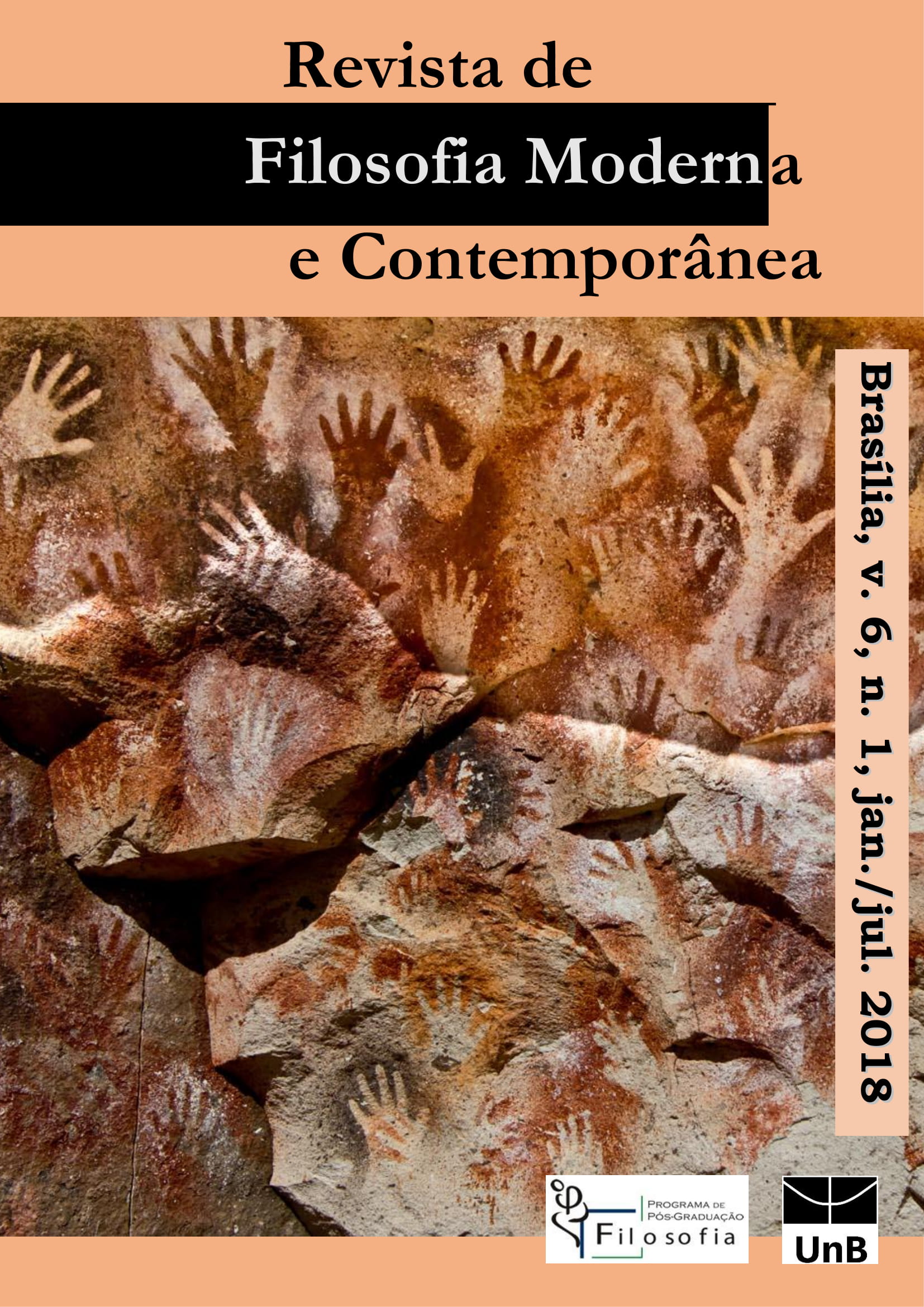Inheritance Systems: The Multiple Dimensions of Evolution
DOI:
https://doi.org/10.26512/rfmc.v6i1.20238Keywords:
Dual Inheritance Theory. Genetic Determinism. Extended Evolutionary Synthesis. Modern Theory of Evolution.Abstract
Evolutionary theory unifies Biological Sciences and has
also been applied in several areas of Exact and Human Sciences.
Originally proposed by Darwin as "descent with modification,"it
presupposes the existence of inheritable variation that is transmitted
unequally to the next generation. In the twentieth century, however,
this theory took on a strongly genetic bias: biological evolution came
to be understood as a process that modifies the composition of a population’s
genetic pool throughout successive generations. Here arises
the genetic determinism, which inspired ideas about sociobiology and
selfish genes, among others. In the last decades, several evolutionists
have emphasized that, in addition to the genetic dimension, there
are other systems of inheritance that can also promote evolutionary
change. Here I present the biological and cultural heritage systems
currently recognized by evolutionary biologists, which have been
explored and disseminated by Paulo Abrantes as essential sources of
variation associated with human evolution.
Downloads
References
ABRANTES, P.C. Imagens de natureza, Imagens de Ciência. Campinas: Papirus, 1998.
ABRANTES, P.C. Filosofia da Biologia. Artmed Editora, 2009.
ABRANTES, P.C. “Culture and transitions in individuality”. In: Dutra, L.H.A.; Luz, A.N. (Org.). Temas de Filosofia do Conhecimento. 1ed.Florianópolis: Núcleo de Epistemologia e Lógica da Universidade Federal de Santa Catarina, p. 395-408, 2011a.
ABRANTES, P.C. “Human evolution: Compatibilist Approaches”. In: KRAUSE, D.; VIDEIRA, A. (Org.). Brazilian Studies in Philosophy and History of Science. Dordrecht: Springer, v. 1, p. 171-183, 2011b.
ABRANTES, P.C. “Aspectos metodológicos de la teoría de la herencia dual en la evolución humana”. In: CONTRERAS, J.M.; LEÓN, A.P. (Org.). Darwin y el evolucionismo contemporáneo. 1ed.Mexico: Siglo XXI, v., p. 135-152, 2012.
ABRANTES, P.C. “Evolução humana: estudos filosóficos”. Revista de Filosofia Aurora (PUCPR. Impresso), v. 25, p. 75-105, 2013a.
ABRANTES, P.C. “Human evolution and transitions in individuality”. Contrastes, v. 18, p. 203-220, 2013b.
ABRANTES, P.C. “Natureza e Cultura”. Ciência & Ambiente, v. 48, p. 7-21, 2014a.
ABRANTES, P.C. “Linguagem e a evolução da mente humana: a perspectiva de um neurobiólogo”. Cérebro, Evolução e Linguagem. 1ed.Brasília:
Editora Universidade de Brasília, p. 23-61, 2014b.
ABRANTES, P.C. “Conflito e cooperação na evolução humana”. Ciência & Ambiente, v. 48, p. 289-301, 2014c.
ABRANTES, P. C.; ALMEIDA, F. P. L. “Evolução Humana: a teoria da dupla herança”. In: ABRANTES, P.C. (Org.). Filosofia da Biologia. 1ed.Porto Alegre: ARTMED, 2011, v. 1, p. 261-295.
ALMEIDA, F. P. L; ABRANTES, P. “A teoria da dupla herança e John Murray, 1859.
DARWIN, C.R. The expression of the emotions in man and animals. London, John Murray, 1872.
DAWKINS, R. The Selfish Gene. Oxford University Press, 1976.
FISHER, R.A. “The correlation between relatives on the supposition of Mendelian inheritance”. Transactions of the Royal Society of Edinburgh 52: 399”“433, 1918.
FISHER, R.A. The Genetical Theory of Natural Selection. Oxford: Clarendon Press, 1930.
GOULD, S.J. The Structure of Evolutionary Theory. Cambridge, MA: Harvard University Press, 2002.
HALDANE, J.B.S. “The time of action of genes, and its bearing on some evolutionary problems”. American Naturalist 66: 5”“24, 1932.
HUXLEY, J.S. Evolution: The Modern Synthesis. London: Allen & Unwin, 1942.
IRONS, W. “Genes and cultures ”“ Boyd and Richerson: the intertwined roles of genes and culture in human evolution”. Zygon 42: 347”“54. 2009.
JABLONKA, E., LAMB, M.J. Epigenetic Inheritance and Evolution. Oxford: Oxford University Press, 1995.
JABLONKA, E., LAMB, M.J. Evolution in Four Dimensions: Genetic, Epigenetic, Behavioral, and Symbolic Variation in the History of Life.
Cambridge, MA: MIT Press, 2005.
KUTSCHERA, U., NIKLAS, K.J. “The modern theory of biological evolution: An expanded synthesis”. Naturwissenschaften 91: 255”“276, 2004.
LALAND, K. “Evolution unleashed: Is evolutionary science due for a major overhaul ”“ or is talk of ‘revolution’ misguided?”. Aeon Magazine. Disponível em: https://aeon.co/essays/science-in-flux-isa-revolution-brewing-in-evolutionary-theory: acessado em 17 de Janeiro de 2018.
LEWONTIN, R.C. The triple helix: Gene, organism, and environment. MA: Harvard University Press, 2001.
LODISH, H.F. “Through the Glass Lightly”. Science Vol. 267, Issue 5204, pp. 1609, 1995.
LOSOS, J.B. The Princeton Guide to Evolution. Princeton University Press. 871p., 2017.
MAYR, E. Systematics and the Origin of Species. New York: Columbia University Press, 1942.
MAYR, E. The Growth of Biological Thought: Diversity, Evolution, and Inheritance. Harvard University Press, 1982.
MÜLLER, G.B. “EvoDevo: Extending the evolutionary synthesis”. Nature Reviews Genetics 8: 943”“949, 2007.
ODLING-SMEE, F.J., LALAND, K.N., FELDMAN, M.W. Niche Construction: The Neglected Process in Evolution. Princeton, NJ: Princeton University Press, 2003.
PENNISI, E. “Modernizing the Modern Synthesis”. Science 321: 196”“197, 2008.
PIGLIUCCI, M. “Do we need an extended evolutionary synthesis?”. Evolution 61: 2743”“2749, 2007.
PIGLIUCCI M.; MÜLLER, G.B. (Eds). Evolution: The Extended Synthesis. MIT Press, Massachusetts, 2010.
RADICK, G. “Teach students the biology of their time”. Nature, 533 (7603), pp. 293-293, 2016.
RICHERSON, P.; BOYD, R. Not by genes alone: how culture transformed human evolution. Chicago: The University of Chicago Press, 2005.
ROSE, M. R., OAKLEY, T. H. “The new biology: beyond the modern synthesis”. Biology Direct, 230, 2007.
SCHLICHTING, C.D., PIGLIUCCI, M. Phenotypic Evolution: A Reaction Norm Perspective. Sunderland, MA: Sinauer, 1998.
SIMPSON, G.G. Tempo and Mode in Evolution. New York: Columbia University Press, 1944.
SOLTIS, J.; BOYD, R. T.; RICHERSON, P. Can group-functional behaviors evolve by cultural group selection? Current Anthropology 363: 473”“94. 1995.
STEBBINS, G.L. Variation and Evolution in Plants. New York: Columbia University Press, 1950.
STERELNY, K. The representational theory of mind. Oxford: Basil Blackwell, 1990.
WADDINGTON, C.H. Evolutionary systems: Animal and human. Nature 183: 1634”“1638, 1959.
WEST-EBERHARD, M.J. Developmental Plasticity and Evolution. New York: Oxford University Press, 2003.
WHITFIELD, J. “Postmodern evolution?”. Nature 455: 281”“284, 2008.
WRIGHT, S. “The roles of mutation, inbreeding, crossbreeding and selection in evolution”. In Proceedings of the Sixth International Congress of Genetics. Vol. 1: 356”“366, 1932.
Downloads
Published
How to Cite
Issue
Section
License
Copyright for articles published in this journal is retained by the authors, with first publication rights granted to the journal. By virtue of their appearance in this open access journal, articles are free to use, with proper attribution, in educational and other non-commercial settings.


